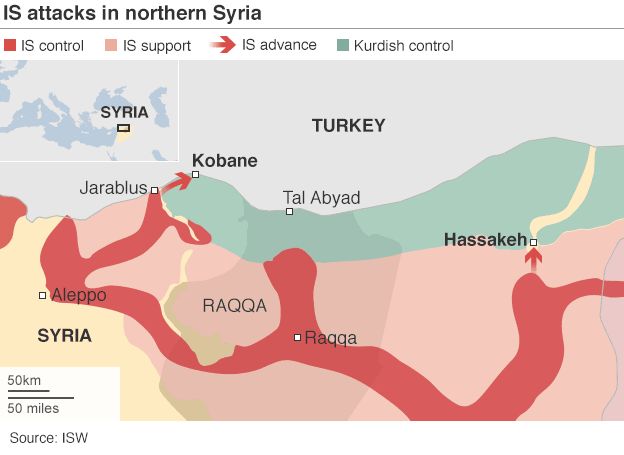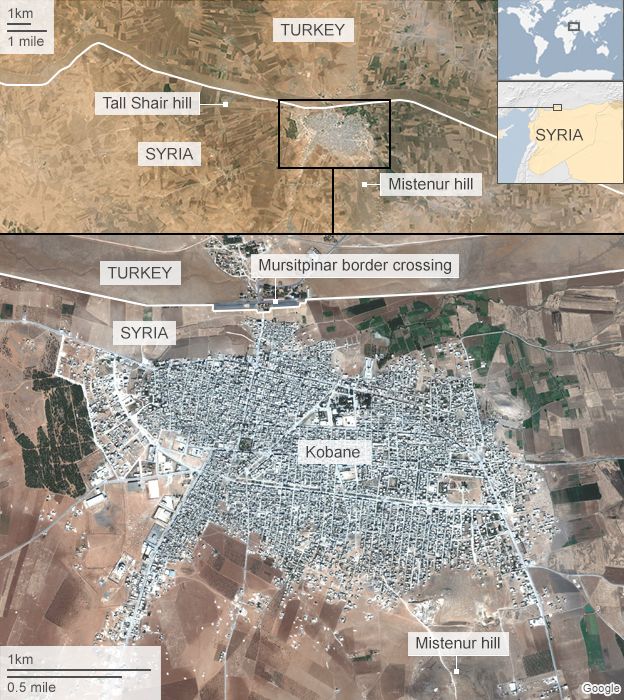Syria crisis: IS makes deadly return to Kobane
By BBC News
Islamic State fighters have attacked the Syrian city of Kobane, months after being driven out in a symbolic battle that made international headlines.
Two car bombs and clashes with Kurdish defenders left up to 30 people dead and scores injured. IS shot dead 20 others in a village nearby, activists say.IS has recently suffered a string of defeats to Kurdish forces.
But in another attack on Thursday, it seized parts of the key north-eastern city of Hassakeh.
The apparent two-pronged IS offensive came as Kurdish fighters from the Popular Protection Units (YPG) cut a major supply line for IS near Raqqa.
Raqqa is the de facto capital of the caliphate whose creation IS announced a year ago after it captured large swathes of northern and western Iraq.
Kobane still matters to IS. It was never important strategically, but this latest attack shows that its loss, after five months of heavy street-to-street fighting and coalition aerial bombardment, still hurts IS.
As was the case last November when a huge vehicle bomb exploded at the same spot, questions are being asked if the attackers made it in from the Turkish side, and if so, why Turkey didn't stop them.
Thursday's assault is a reminder, too, that IS, despite recent losses in the area, is still very much active and capable of offensives. Overnight they also attacked Hassakeh to the east, a far bigger prize.
Despite the narrative of the last few weeks, IS is far from being on the back foot.
The IS attack on Kobane began with militants detonating a car bomb - followed by an assault from dozens of IS fighters from a number of directions.
Some may have hidden themselves among returning refugees - there are also reports that they disguised themselves by wearing Kurdish militia uniforms, says the BBC's Middle East correspondent Quentin Sommerville.
A reporter with Kurdish news agency Rudaw reports from inside Kobane that he had seen "a wounded woman whose entire family were killed inside their home after IS gunmen entered their house".
Hours later another car bomb exploded in the city.

Suggestions by Syrian state television that the militants had entered Kobane from Turkey were rejected in the Turkish media.
The governor's office in the Turkish province of Sanliurfa, bordering Kobane, was quoted by Hurriyet newspaper as saying that evidence suggested they entered from the west, via the Syrian town of Jarablus.
The militants reportedly struck at government-held neighbourhoods and captured two districts. Syrian state TV said local people were being forced from their homes and that there had been killings.
Hassakeh is the largest city in north-eastern Syria. An estimated 500,000 people live there, in addition to thousands who have fled violence elsewhere.
Between 30,000 and 35,000 people from a population of about 400,000 have returned to Kobane following the IS defeat in January.
More than 200,000 Syrians have lost their lives in four years of armed conflict - more than 11 million others have been forced from their homes.



0 Comments:
Post a Comment
Subscribe to Post Comments [Atom]
<< Home